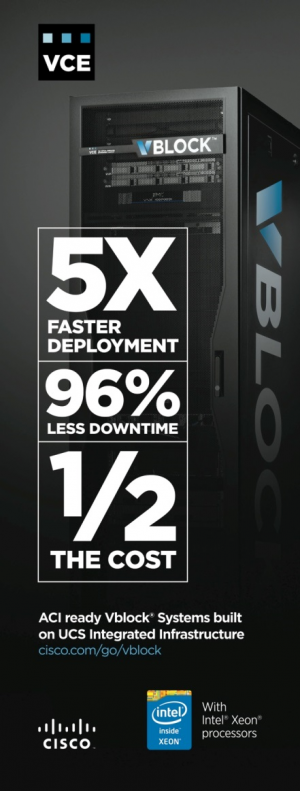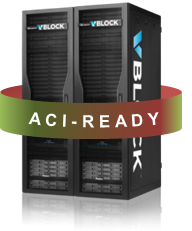
 It is nearly five years since Cisco, EMC and VMware came together to set up VCE and introduce one of the world’s best integrated infrastructure solutions with the Vblocks. The promise was to deliver “dramatic efficiencies” to customers promising significant reduction in capital and operating expenses giving customers flexibility and choice. Customers appreciated the operational simplicity of the model and Vblock sales took off with multi-billion dollar annual run rates.
It is nearly five years since Cisco, EMC and VMware came together to set up VCE and introduce one of the world’s best integrated infrastructure solutions with the Vblocks. The promise was to deliver “dramatic efficiencies” to customers promising significant reduction in capital and operating expenses giving customers flexibility and choice. Customers appreciated the operational simplicity of the model and Vblock sales took off with multi-billion dollar annual run rates.
Much has changed in the industry since then. The social-mobile-cloud-big data revolution has accelerated posing new requirements for IT and increasing the relevance of data centers and private cloud deployments. SDN has moved from being just a buzzword with several use-cases. Server virtualization has continued to drive efficiencies and hybrid clouds have become the new norm. Amidst all this, customers continue to crave operational simplicity and consumable infrastructure for their data center and private cloud deployments making the VCE approach as relevant as ever.
So, today, we’re very happy to share the success and celebrate the joint innovations as VCE rolls out its next generation Vblock systems that drive new levels of convergence. With Cisco continuing to refresh its portfolio with new Nexus products and industry leading SDN with the Cisco Application Centric Infrastructure (ACI) approach, and with Cisco UCS introducing next-generation products, it is natural that these innovations be reflected in the VCE Vblock integrated solutions.
Cisco is helping bring in new innovations to the party. The Nexus 9000 forms a key element with a very compelling form factor and industry leading price-performance. For customers interested in venturing into Software Defined Networking (SDN) and making their infrastructure application centric, the Application Policy Infrastructure Controller (APIC) provides a central point of management and policy application. The result is a simplified operational model and lower TCO across a variety of deployment scenarios.
As VCE introduces Vblock Systems 240, 540 and 740 today, they provide the flexibility of consuming the network elements as standalone switches or SDN deployments in an ACI mode. Vblocks can therefore operate in a standalone mode with current automation mechanisms or in an ACI ready mode subscribing to the APIC policy-driven model. Customers adopting the new Vblock systems get the operational flexibility to choose.
With new applications continuing to drive the requirements for Fast IT, the infrastructure elements need to shift into higher gear and deliver agility, without compromising on efficiency, resiliency or scale. Cisco believes that with the introduction of these next-generation Vblock systems, VCE customers will continue to experience the benefits of integration coming from the three industry leaders in server virtualization, networking and storage. The state of the art networking with the Nexus switching and the application centricity that ACI brings will be especially critical for high-performance mixed workloads and to address emerging 3rd party applications.
We congratulate the VCE team on the current launch and wish them continued success as they help our global customers accelerate the journey to SDN and cloud!
VCE press release: http://www.vce.com/about/media/news?id=tcm:20-21288
Cisco ACI: http://www.cisco.com/go/aci
CONNECT WITH US